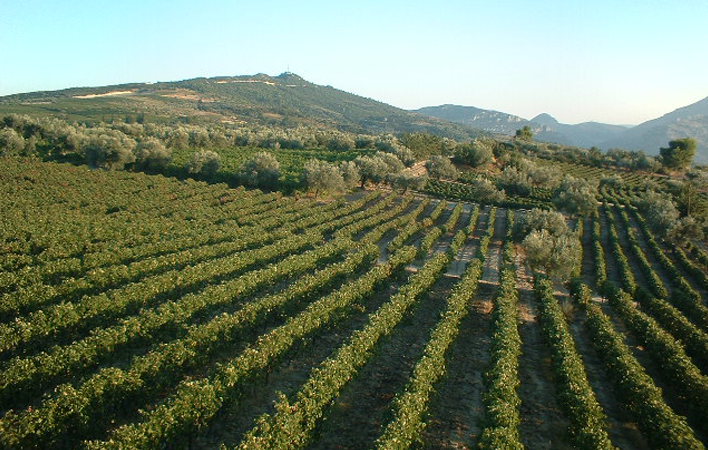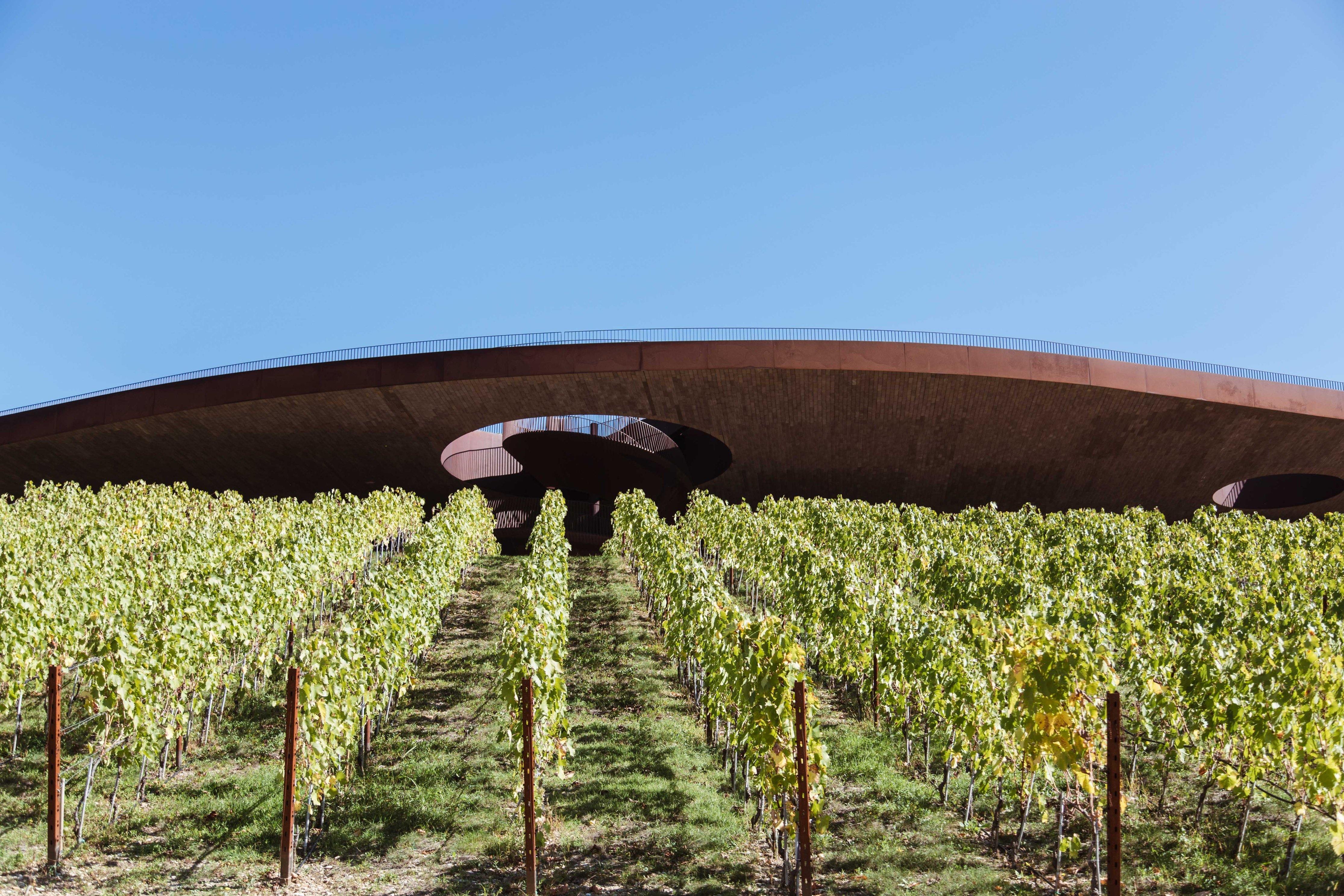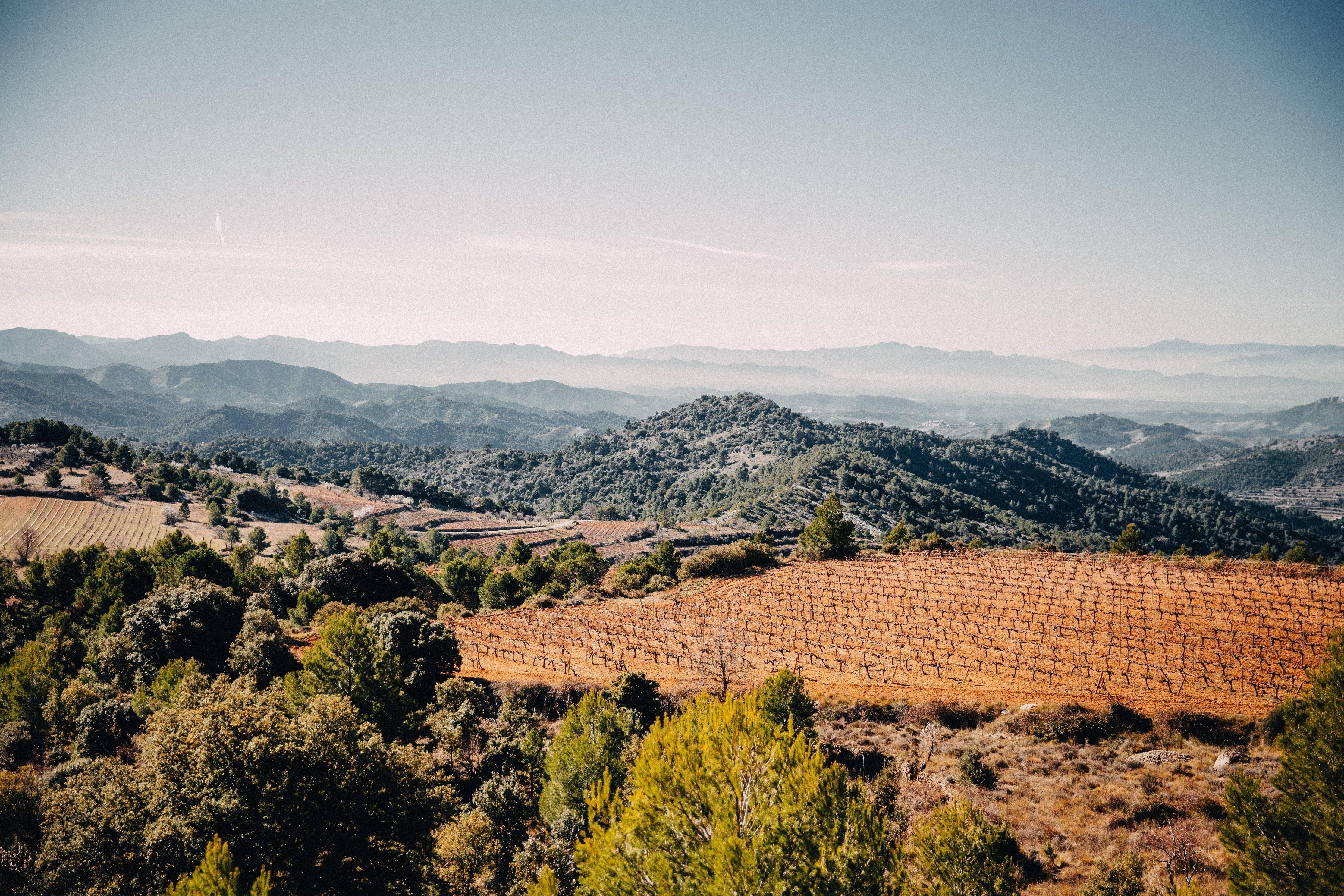Dry January!? Let’s Talk Sweet January...
with a paradox… The Perfect Wine with Haggis on Burn’s Night! (25 January)
Firstly, I hope you all had a particularly good Christmas and best wishes for the coming new year!
It is customary for some people to have a “dry” January – I am not one of them. Whilst we might indulge much less post-Christmas, I find this month a good opportunity to carry out the maxim “drink less but better”.
Also, with the colder months, thoughts turn to wine styles which suit the climate – and foods. This set me thinking about something more on the hedonistic scale and one of the wine world’s greatest delights – sweet, or dessert, wines. Apart from the sheer pleasure these wines give, many are made from some of the most remarkable methods, where winemakers have harnessed the wonders of nature to create unique flavours and levels of intensity – so let’s have a look at these.
Whilst it is possible to make a sweet wine by adding a sweetening agent to a dry wine this is a rather unexciting, if very practical, process. Sweeter Sherries are made this way for example. The more interesting, frankly romantic, methods are founded in making wine from grapes which are:
- Air dried and desiccated
- Naturally shrivelled from the action of a mould
- Frozen on the vine, as well as looking at the role of …
- Fortification
Before we look at these individually, I would just like to take you through the fermentation process which results in a sweet wine – as this is the same for the methods above.
Grapes, like all fruit, gain sugar as they ripen and in most cases are harvested with sugar levels which are sufficient to make dry wine. By that, all the sugar contained in the grape and juice is fermented out (consumed) by the action of yeast during fermentation, with no residual sugar left behind - and therefore a dry (white, red, or rosé) wine is made. What is interesting for winemakers is that yeast are active during fermentation up to about 15-16% maximum volume of alcohol produced (from the sugar) – after which the level of alcohol itself becomes toxic to the yeast and they die (and/or they also run out of food/sugar). This why most table wines are between 12% - 14.5% by volume (always found on the label – by law - by the way).
So, imagine if you harvested grapes which were so ripe and full of sugar that if yeast did exist which could ferment the wine out dry it would be 25-30% by volume! But of course, they do not – so when they die during fermentation of these super ripe grapes and juice there is a considerable amount of natural grape sugar left unfermented – hence a sweet wine is made.
Air Dried & Desiccated
 Air dried Corvina grapes in Valpolicella – at Allegrini
Air dried Corvina grapes in Valpolicella – at Allegrini
In this instance grapes are harvested as normal, but instead of crushing and fermenting them straight away they are placed on wooden trays, or in baskets – or even hung up to dry like the washing. This process can take up to 6 months, but the result is that up to 40% of the grape mass is evaporated – the vast proportion of this being water. This can be accelerated by using large scale fans to circulate the air mass around the grapes.
The first country to develop and utilise this – and on a significant scale – was Italy. They call this procedure “passito”, which may even appear on the label. One of the earliest and most famous examples (to this day) is the Veneto region of Valpolicella. The twist here is that grapes are dried to produce both dry red wines (labelled amarone) and sweet red wine (labelled recioto). The only difference is that the fermentation is stopped early (via chilling and filtration of the yeast) to make Recioto, whilst it can be completed to make Amarone – but inevitably these dry wines will have a much higher alcohol level, and greater body, due to the increased level of sugar and extract from the drying process.
Around the world there are plenty of copycat versions, and a twist to this desiccation aspect is that you can leave the grapes on the vine to shrivel naturally prior to harvest in certain cases. Some accentuate this process by cutting the fruiting cane (with berries) away from the main trunk or branch thereby starving the bunches of water and accelerating the desiccation.
Vino Gusto recommendations and THE wine to go with Haggis on Burn’s Night
So, two contrasting examples from the list – a classic (and only dry wine highlight) Amarone Valpolicella from the house of Allegrini, and a sweet “Cordon Cut” Riesling from Mount Horrocks in the Clare Valley Australia where, as the name suggests, they deliberately cut the cane from the mother plant. The Amarone is an amazing savoury, spicy, dried fruits partner to Haggis with Burn’s Night around the corner – I really do recommend it - and any other savoury meat dishes, or char-grilled vegetables. As a great value alternative, I must recommend the Alpha Zeta Amarone which offers a similar sense of 'lusciousness', if not quite matching the complexity of Allegrini's classic example above (at more than double the price).
The ultra citric, zesty yet sweet Cordon Cut is ideal with fruit desserts, pastries, and meringue - a particularly good match for lemon based desserts.
“Noble Rotted” and Shrivelled

Would you make wine from these? Well, someone did back in history because this is a completely natural process, which continues to this day. In certain areas and with certain (thinner skinned) grape varieties there is a natural mould – called “botrytis cinerea” - which forms on the skins of the ripe grapes and invades (through its root system) the juice inside without breaking open the skin – please see sequence picture. As most of what it consumes is water, it super concentrates the juice and raises sugar to incredibly high levels as part of the percentage volume of the juice. The ideal condition to produce this mould is a series of humid mornings and dry, sunny afternoons by the way – so proximity to water, such as a river or lake, is useful to help promote this environment.

Going … Going … Going … Gone
And the sweet wine it makes is simply wonderful – exotic and rich but never heavy with wonderful balance and texture - and notes of marmalade and honey. The most famous examples of this style of wine are found in Barsac and Sauternes in Bordeaux, and Tokaj in northeast Hungary.
Vino Gusto recommendations
A classic Sauternes – this is the second wine from the leading Grand Cru Château Suduiraut (2016 vintage to be precise) in a ½ bottle. Made mainly from Sémillon grapes this has fine notes of Seville orange marmalade and a touch of honey. Perfect with any caramelised fruit puddings – classically Tarte Tatin. Also works well with blue cheese.
Frozen on the vine
 This intriguing production process again may have originally happened by accident. Quite obviously it evolved in wine growing areas which were/are prone to hard winters and where – at some point, some poor soul went out in the freezing cold to harvest the last remaining grapes hanging on the vine – no doubt convinced they were ruined – only to find that when pressed and fermented the most wonderful, sweet wine resulted – by why is this so?
This intriguing production process again may have originally happened by accident. Quite obviously it evolved in wine growing areas which were/are prone to hard winters and where – at some point, some poor soul went out in the freezing cold to harvest the last remaining grapes hanging on the vine – no doubt convinced they were ruined – only to find that when pressed and fermented the most wonderful, sweet wine resulted – by why is this so?
If you harvest grapes which are ripe but frozen the juice inside will consist mainly of two parts – one will be solid, frozen water and the rest unfrozen super concentrated juice (this is because the sugar element has a lower freezing point than the water part). If you crush them immediately the juice that runs out is super concentrated in flavour, acid, and very high in sugar because there is no water dissolved in it to dilute this level of concentration. What remains behind are solid ice crystals which are discarded immediately along with the skin. This results in an incredibly pure and refined sweet wine when fermented, with wonderful levels of acidity, balance, and freshness. But please note you don’t and cannot do this process with noble rotted grapes.
The three great production areas of the world for this style are Germany, Austria, and Canada.
Fortification
The term “fortification” means – in winemaking - the artificial addition of alcohol (usually in the form of grape brandy). As well as being a potential method of preservation it allows the option for the winemaker to make a sweet wine through the process. If you hit a fermenting vat of grape juice with an extremely high strength spirit the level of alcohol is so high, that the effect is like The Monty Python foot coming down. It instantly kills the yeast before all the yeast has had time to ferment out all the natural grape sugars – result a sweet wine. Probably the most famous example of this process is in the production of Port. But there are others – most notably “Vin Doux Naturels” (VDNs) from the south of France (mainly based around white Muscat and black Grenache grapes) and Liqueur Cask Aged Muscats from Rutherglen in Victoria, Australia.
You are all very familiar with port and may be “ported out” after Christmas, so, I have gone for two options from the Rutherglen district in Victoria, Australia Liqueur Muscats, and specialist producers Chambers and Stanton & Killeen as the final recommendations.

Seasoned barrels aging the liqueur Muscat in the Chambers cellars
Both producers are long established specialists in this style, which includes aging in old oak barrels which, in turn, elevates the nutty and liquid caramel notes which are a hallmark of these great wines. Please do serve these very well chilled (they are sweet) and are perfect with richer and caramelised desserts such as Sticky Toffee Pudding, or anything with dried fruits including cakes and pastries. Importantly they also works well with chocolate dessert dishes – usually quite a difficult marriage.
One other thing that links all these sweet wines described – and I am sure this will not come as a surprise – is that they are usually made in small quantities, and not necessarily in every vintage (especially noble rotted examples) given the vagaries of nature and the climatic “roll of the dice” required for the conditions to be ideal for their production.
Two other important recommendations – when food matching please make sure the sweet wine is at least as sweet as your dessert, and always serve these wines well chilled – the sweeter they are the colder you can serve them.
They also make a fine after dinner drink, rather than a pudding if you feel full. And the good news is that you do not need to drink the whole (half) bottle in one go – all these wines can be drunk over several occasions. To quantify this all the sweet wines highlighted in the blog will comfortably keep in the fridge for at least a week once opened and the liqueur muscats for 2-3 weeks.
Apart from being the ideal drink for the colder weather, these wines therefore offer great value for money; can be sipped and savoured over several nights; and offer multiple opportunities to enjoy with various desserts and cheeses.
__
Nick Adams MW
 We are delighted that great friend of the business, Nick Adams MW, has joined our team to write a monthly wine blog. If you're a regular at casa VG, you may have bumped into Nick at one of our collaborative tastings. If you're not instantly familiar with Nick's post-nominals, Nick is one of only 415 Masters of Wine in the world.
We are delighted that great friend of the business, Nick Adams MW, has joined our team to write a monthly wine blog. If you're a regular at casa VG, you may have bumped into Nick at one of our collaborative tastings. If you're not instantly familiar with Nick's post-nominals, Nick is one of only 415 Masters of Wine in the world. Nick says, “I am looking forward to working even more closely with Jake and the team at Vino Gusto. I hope to bring my broad trade experience into play to keep you informed and entertained via these monthly blog releases. Please do though let us know of any subject matters which might be of special interest to you, and we will see if can get these included over the coming months”.


















Leave a comment